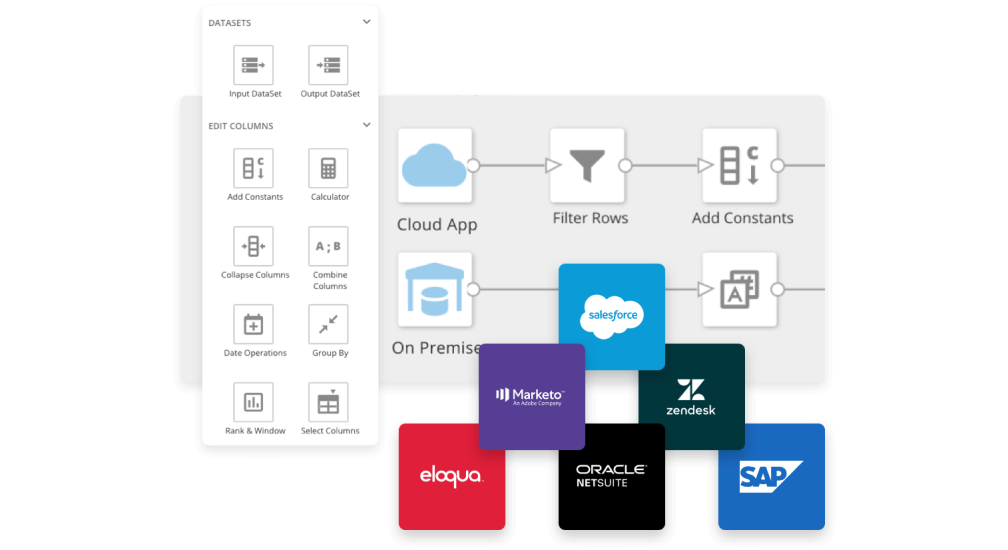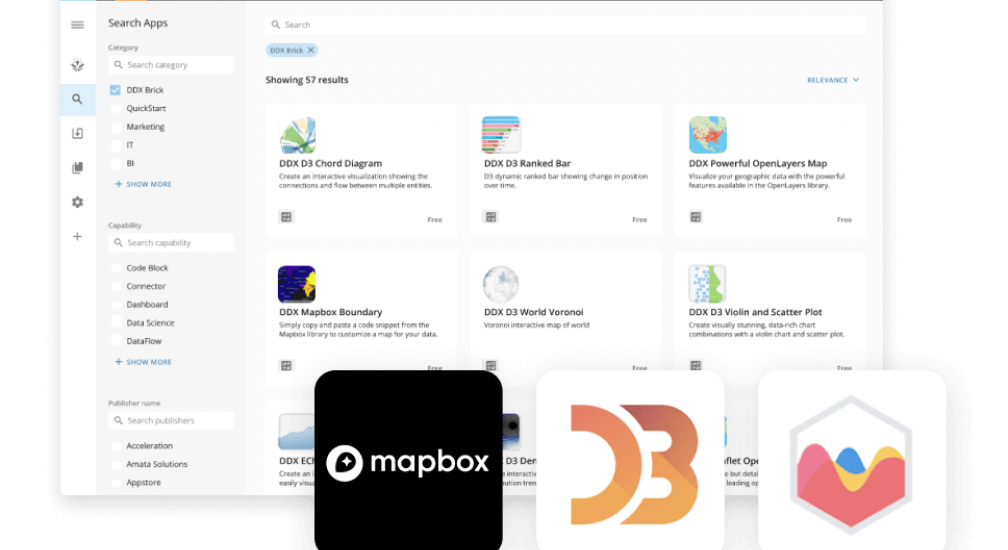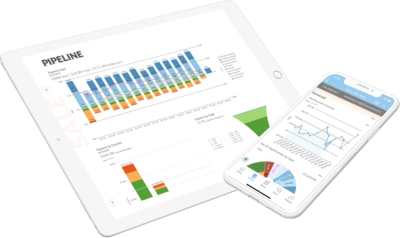How composable analytics is solving big data waves
The world is drowning in data. Every minute, 8 million gigabytes of information are being generated, and this figure is expected to rise to 44 zettabytes by 2025.
In order to make sense of this data deluge, organizations are moving from a traditional “batch-and-queue” approach to analytics towards a more flexible, real-time approach that can address the ever-changing needs of their businesses.
The challenge with this shift is that most big data tools are not designed for composability—meaning they don’t play well with other tools or applications in the enterprise stack. This means organizations can’t get the most out of their analytics investments.
As you’re reading this, your organization is inundated with data. Data is everywhere, and it’s growing exponentially. Data has become the new oil and gold of our time.
Yet, it’s not just about generating more data. It’s about understanding the underlying meaning behind that information to make better decisions for your business—in real-time or near-real-time.
To do this, organizations need composable analytics solutions that allow them to shed light on their big data waves so they can gain insight into what drives performance in their organization: from products and services to marketing campaigns or operations management.

The problem created by the pandemic—big data waves
The problem created by the pandemic was the massive increase in data collection without innovation in the BI space. We adapted tools and technologies to digitize the world for greater communication and integration of services while being stuck indoors, but didn’t take the time to also improve the data systems we were using.
You have to remember that a big problem with our current modeling is that data is not just about volume. It is also about velocity and variety. As data generation continues to accelerate, businesses must be able to quickly react to changes in the market and make decisions based on the most up-to-date information. In addition, analytics solutions need to incorporate new data sources as they emerge or add more context if they are already being used.
Businesses are increasingly turning toward composable technologies—with their modular nature—as a way of solving this challenge. The availability of tools that can be used by anyone on the team to streamline data quality and observability for better outcomes is not only a benefit of composable analytics but a necessary competitive advantage to maintain in today’s fast-paced, consumer-driven marketplace.
The future is composable
Two key trends are shaping the future of technology. One is a shift from monolithic systems to composable ones. The other is an explosion in data volume and velocity that has left business leaders struggling to make sense of it all.
This is where composable analytics come in. It offers a way for businesses to build and deploy new decision-making tools as they need them without having to spend time or money on building custom solutions from scratch.
The majority of these new tools are similar to Lego toys. They are already designed with a specific function that can be fit together without needing a ton of programming knowledge. This empowers everyone, from the intern analyst to the CTO, to integrate composable architecture in a more fluid manner.
With its ability to analyze data at extreme scale and speed while still keeping costs down, composable analytics promises not just effective but affordable solutions for big-data problems—and that’s good news for anyone looking to seize the opportunity presented by these two trends.

Getting to composability
The problem with BI is that it’s not composable. It’s a one-size-fits-all approach to solving problems that are better suited for customized solutions. But how can we craft tailored solutions from the same data?
Composability enables you to do just this by leveraging reusable components and building new ones from core elements, which allows you to make changes and updates in one place—wherever there is the most value added for your business users—and have them apply everywhere else automatically.
This makes every decision more deliberate because it’s based on data rather than intuition or assumptions about what works best based on past experience alone. Some of these crucial areas include:
1. Headless BI
With headless BI, you can now access data from anywhere in the world. You can build applications that resize themselves and provide a seamless user experience. And you can build apps that are useful for users across any device type or platform—all without having to rewrite code every time.
With these capabilities, it became clear that the future of big data was not just about building better analytics tools, but also about empowering developers with new ways to build applications on top of existing infrastructure. This will allow companies to shift from traditional big data silos to a wide range of data sources through composable analytics infrastructure.
2. No-code UI
It’s time to start thinking about no-code UI as the most important part of your analytics solution.
What is no-code UI? It’s nothing more than a drag-and-drop interface that allows you to build analytics without writing code. While other types of visual analytics tools have been around for years, these solutions have always required some degree of coding knowledge.
The no-code UI removes this barrier and makes it easy for anyone to build their own analytics on top of existing data sets or integrate new data sources into their platform.
3. Backend integrations
A flexible data architecture is a necessity for composable analytics, but it’s not enough. You’ll also need to be able to integrate with other systems like business intelligence tools and cloud platforms.
As big data waves hit our businesses, it creates problems of both volume and data type. While you can use no-code UI and headless BI engines/dashboards to translate this data, you also need backend integrations that pull data from various sources to create easily observable pipelines with clear data lineage and governance tools in place.
With greater flexibility, composable analytics allows for data innovation
Data innovation is the process of leveraging your data to create new insights and solutions. It can be used to solve problems, discover opportunities, or improve existing processes.
Data innovation is not a separate entity from big data—it’s an extension of it. Big data analytics can be used creatively to solve problems using smaller datasets that don’t meet traditional big data thresholds.
Composable analytics allows you to innovate with small batches of data and then combine them into larger datasets later on if need be, which makes it easier for you to iterate through the process of testing ideas quickly without having to worry about spending too much money upfront.

Moving away from big data to wide data
Wide data, in contrast to big data, is the collection of dispersed data sources such as documents, images, metadata, raw data, and videos. It’s not just limited to unstructured data but also includes structured data sources. If you have a look at your own company or organization, most likely it has a wide variety of information that can be used for better business decisions.
Wide data analytics refers to using all types of unstructured and semi-structured data sources—whether they are generated internally or externally—by applying advanced analytics methods.
While traditional BI tools focus on structured datasets (such as databases) and crunch numbers like sales figures or financial transactions while providing summarized reports based on these datasets, WDA gives businesses access to “bigger” sets of information (both structured and unstructured) that were previously unavailable for analysis due to a lack of proper tools for their processing and management.
Composable analytics is flexible enough to work with numerous broad data sources. This is a massive benefit to many companies that spread out their silos and sources during the pandemic and need to now unify them into a single point of truth.
Driving growth & efficiency
Data innovation is the new norm. Composition is the future of BI, and composable analytics can help you solve big data waves.
Composability will reshape how we think about software, hardware, and infrastructure in general—and analytics is no exception. Composable analytics allows for faster innovation by making it easier to build products from existing building blocks available on the market. This concept extends beyond just technologies; it affects business processes as well as culture (think agile).
Composable enterprise refers to an organization that embraces a set of principles that enable its members to collaborate more effectively so they may pursue opportunities with greater speed and agility than ever before.
Analyzing and managing data is one of the most important considerations in business today. It’s also one of the most complex.
The sheer volume of information available to companies today can be overwhelming, even for those with large budgets and resources at their disposal. One way to handle this challenge is through composable analytics—a concept that allows businesses to analyze more types of data more effectively than ever before, allowing them to make better decisions faster than ever before too.
Check out some related resources:

10 Power BI Alternatives and Competitors in 2025

The 11 Best Big Data Analytics Tools in 2025






